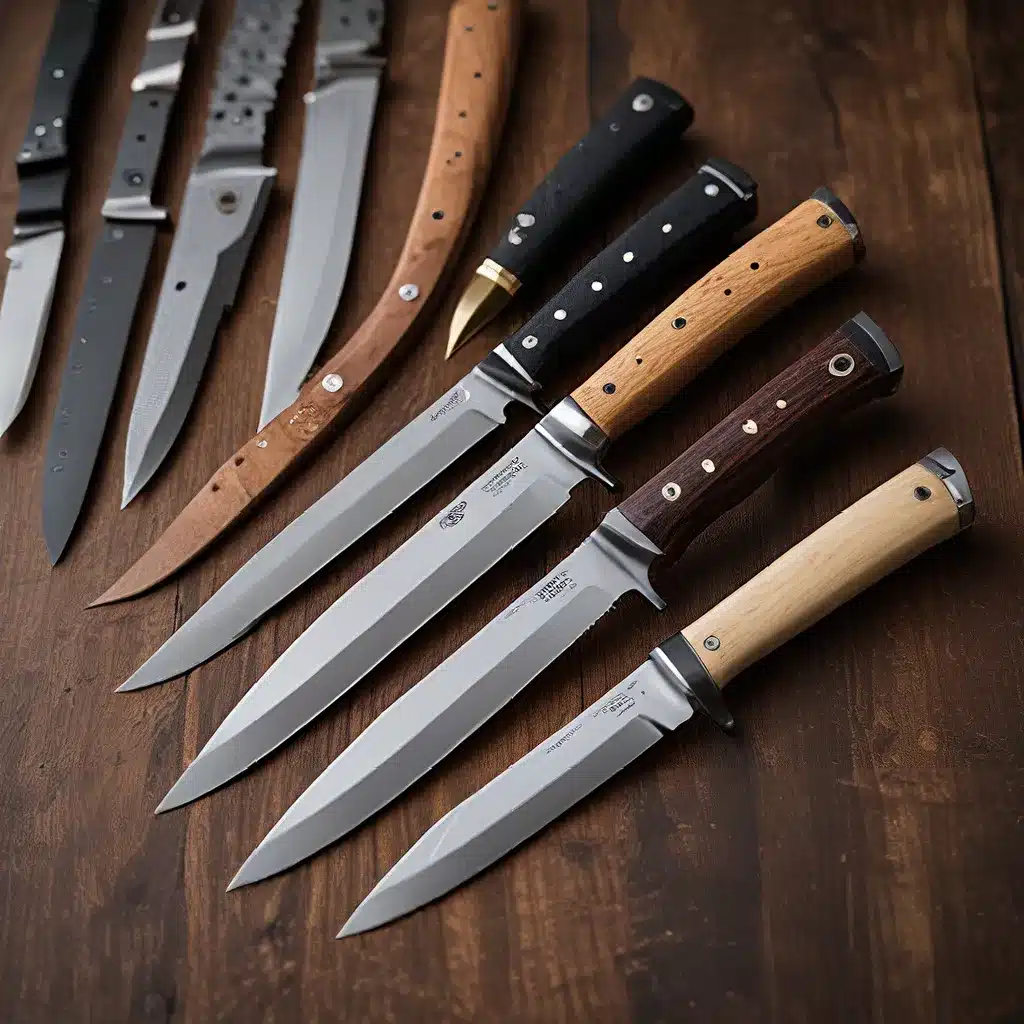
Blades of Contention: Navigating the Complexities of Knife Regulations
The Intricate Dance of Blade Design and Legal Frameworks
As a passionate enthusiast of the art of knife-making, I’ve often found myself navigating the perplexing waters of knife regulations. It’s a captivating realm where the elegance of blade design collides with the complexities of legislative landscapes. And let me tell you, it’s a dance that requires some deft footwork.
Unsheathing the Challenges
Imagine this – you’ve poured your heart and soul into crafting the perfect blade, a masterpiece that reflects your unique vision and skill. But the moment you try to share your creation with the world, you’re confronted with a labyrinth of laws, restrictions, and varying interpretations. It’s enough to make even the most seasoned knife enthusiast feel like they’re walking a tightrope.
The problem is, the rules surrounding knives can be as multifaceted as the blades themselves. What might be perfectly legal in one jurisdiction could be considered a dangerous weapon in another. And the kicker? These laws can change faster than the sharpened edge of your prized possession.
Blurring the Lines of Legality
Take, for instance, the case of a recent court ruling that left many knife enthusiasts scratching their heads. Suddenly, a blade that was once deemed perfectly acceptable was now considered a prohibited item, all because someone in a position of power decided to redefine the parameters.
It’s a frustrating reality that often leaves us feeling like we’re walking a tightrope, constantly on the edge of breaking the law without even realizing it. And the worst part? The goalposts are always moving, making it nearly impossible to keep up with the ever-changing landscape of knife regulations.
Navigating the Murky Waters of Legality
But fear not, my fellow knife aficionados, for I’ve learned a thing or two about navigating these treacherous waters. It’s all about staying informed, being adaptable, and knowing when to take a stand.
Staying Ahead of the Curve
First and foremost, it’s crucial to stay up-to-date on the latest developments in knife laws. This means subscribing to industry publications, joining online forums, and keeping a vigilant eye on legislative activities in your area. The laws can change in the blink of an eye, and staying ahead of the curve is the only way to ensure you’re not caught off guard.
But it’s not just about knowing the rules – it’s also about understanding the nuances and grey areas. As a knife enthusiast myself, I’ve learned that sometimes, it’s not as simple as black and white. There are often loopholes, exceptions, and interpretations that can work in your favor.
Adapting to the Ever-Changing Landscape
Of course, even with all the research and preparation in the world, there will be times when the rug is pulled out from under you. That’s where adaptability comes into play. Be willing to pivot, modify your designs, and explore alternative solutions when the legal landscape shifts. Sometimes, it’s about finding creative ways to stay within the bounds of the law while still expressing your artistic vision.
And let’s not forget the power of advocacy. When faced with unfair or overly restrictive laws, it’s important to make your voice heard. Join forces with like-minded individuals and organizations, write to your local representatives, and advocate for common-sense legislation that recognizes the legitimate uses and cultural significance of knives.
Embracing the Complexity, Forging Ahead
At the end of the day, navigating the complexities of knife regulations is a never-ending journey. But for those of us who truly love the art of blade-making, it’s a challenge we’re willing to take on. It’s about staying vigilant, adapting to the ever-changing landscape, and finding ways to keep the passion alive, even in the face of legal obstacles.
So, my fellow knife enthusiasts, let’s embrace the complexity, roll up our sleeves, and forge ahead. With a little ingenuity, a lot of determination, and a dash of creativity, we can continue to push the boundaries of blade design while respecting the laws that govern our craft. After all, it’s not just about the blades themselves – it’s about the stories they tell, the emotions they evoke, and the connections they forge. And that’s a legacy worth fighting for.


